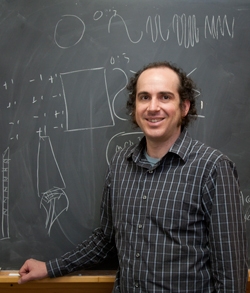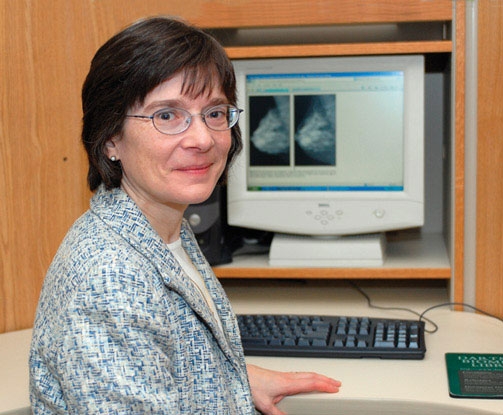Dartmouth researchers were awarded $11.7 million during March, including $7.1 million in new and competing awards. View the complete list of awards, as reported by the Office of Sponsored Projects. Here, Dartmouth Now spotlights two investigators and their work.
Ryan Halter, Assistant Professor of EngineeringNational Cancer Institute Intraoperative Surgical Margin Assessment with Electrical Impedance Spectroscopy

Completing the task: “The primary aim of prostate surgery is to remove all cancerous cells from the body,” Halter says. “Unfortunately, small islands of cancer cells, known as positive surgical margins, are occasionally left behind following surgery. When this happens, patients have a much higher likelihood of experiencing cancer recurrence.”
A new way: Positive surgical margins are determined by microscopically evaluating the removed prostate following surgery. Halter and his team will develop a technology that senses the electrical properties of the tissue bed left inside the body to determine intraoperatively (in real-time) if there are remaining cancer cells. “We hope that this will reduce the occurrence of positive surgical margins and ultimately reduce cancer recurrence rates,” he says.
Teamwork: Halter’s research involves Andrea Borsic, assistant professor of engineering, and Alex Hartov, professor of engineering, at Thayer School, as well as John Heaney, MD, professor of surgery; Alan Schend, MD, interim chair, Department of Pathology; and Eugene Demidenko, research professor of community and family medicine, all of Dartmouth Medical School.

Anna Tosteson, Professor of MedicineUniversity of Maryland Community Ambulation following Hip Fracture
On the mend: The goal of Tosteson’s project is to evaluate an in-home, supervised, 16-week exercise intervention in hip fracture patients who have completed standard care against a control intervention. The desired outcome is that these patients are able to walk in community settings after four months of care.
Cost effectiveness: Tosteson’s study will involve 300 patients enrolled from three clinical centers. A cost-effectiveness portion of the study is based at Dartmouth’s Economic Evaluation Core, which Tosteson directs. Although this is her first economic evaluation of a hip fracture intervention, “the study benefits both from my prior research addressing fracture outcomes and from ongoing research assessing the cost-effectiveness of surgery relative to non-operative care in the Spine Patient Outcomes Research Trial (SPORT),” Tosteson explains.
Teamwork: The overall study is led by Jay Magaziner, PhD, professor of epidemiology at the University of Maryland and by Rebecca Craik, PT, PhD, professor of physical therapy at Arcadia University in Philadelphia. Lead clinical site investigators include Richard Fortinsky, PhD, at the University of Connecticut Health Center and Kate Mangione, PT, PhD at Arcadia University. The Economic Evaluation Core at Dartmouth is coordinated by Loretta Pearson, MPhil.
